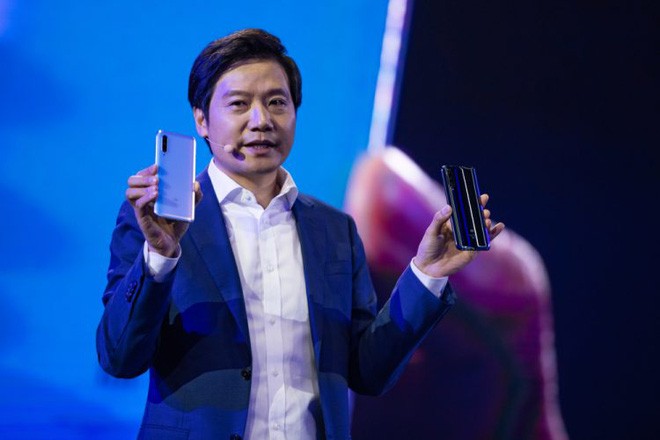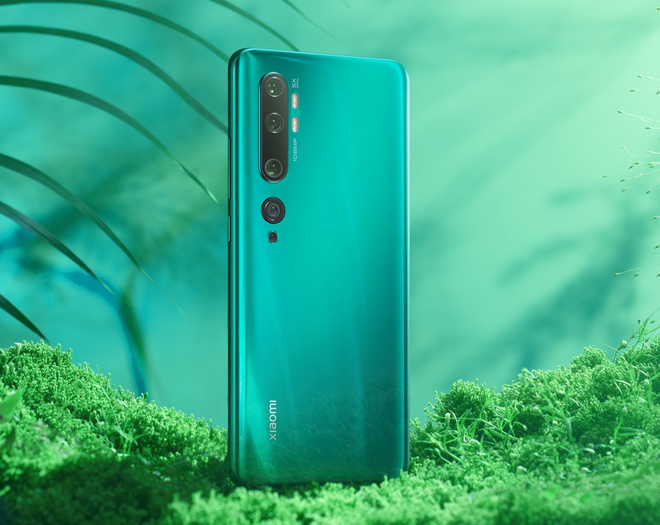Xiaomi is now bored of low-cost smartphones, wanting to `` dry blood '' with Huawei in the high-end segment
" Xiaomi has removed the price limit. This is when we entered the high-end segment, " Lei Jun, Xiaomi's founder and CEO, wrote on Weibo.
According to many technology experts, the launch of Mi 10 is an indication that Xiaomi is focusing more on the high-end segment, after a long time focusing on mid-range and popular smartphones with configuration models. Strong image compared to the price range.
In other words, Xiaomi now wants to compete directly with Huawei, which holds the No. 1 position in the Chinese smartphone market today. According to SCMP, Huawei now accounts for 80% of the high-end smartphone market share in China, while Oppo, Xiaomi and Vivo share the remaining 20%.

Xiaomi wants to shake off the label of only making low-cost phones to enter the high-end segment
" The Mi 10 duo will be the first product to help the company move into the high-end segment, " Xiaomi founder Lei Jun revealed in an interview after the smartphone was launched. " I think our previous customers were mostly young people. Now, Xiaomi will make every effort to gain acceptance from high-end smartphone users. "
" Oppo and Xiaomi have experienced miraculous growth in the past few years thanks to the adoption of unique business models (when launching low-cost but well-configured smartphones). However, this strategy is gradually losing. efficiency, while competitors can easily copy the 'steps' of Oppo and Xiaomi, "said Nicole Peng, vice president of mobile market research at Canalys said.
" The move to the high-end segment is not merely a strategy of price. It also shows that both Oppo and Xiaomi are confident in the technology they have. The biggest challenge they will face. is how to satisfy the advanced user audience, which is very fastidious and always looking for the highest possible experience . "

Xiaomi Mi 10 and Mi 10 Pro will be the weapons that help Xiaomi compete with Huawei
Last month, Xiaomi announced the Mi 10 and Mi 10 Pro high-end smartphones with prices of about $ 570 and $ 720 respectively. Meanwhile, Oppo has also launched the Find X2 flagship model with a starting price of about $ 785. It can be seen that these are products with a much higher price than the two smartphone brands that launched several years ago.
" February and March are always the fiercest time of the year, when manufacturers launch top and high-end smartphones . Everyone now has the same question: Why is the price of electricity sold? phone increasingly high? ", Xiaomi vice president Lu Weibing wrote on Weibo." In fact, today, if you want to develop a high-end smartphone as possible, you have to use components. best, most expensive at all costs ".
According to SCMP, a series of Chinese phone makers such as Xiaomi, Huawei, Oppo and Vivo have expected sales to grow significantly with the launch of 5G-enabled smartphones, which are base-compatible. Telecommunication infrastructure has been widely deployed in the country of billion people.

However, the rapid spread of the COVID-19 epidemic in China in January and February has caused this hope to fail. A series of smartphone production lines in China have been temporarily shut down, as authorities have ordered blockades of some cities and restrictions on crowds.
As a result, a number of market research companies have given a gloomy picture to Chinese smartphone makers in 2020, when sales plummeted. According to Canalys and Strategy Analytics, the number of smartphones sold in Q1 this year declined by 50% compared to Q1 / 2019. Meanwhile, market research firm IDC has forecast a 30% decline.
You should read it
- Battery saving tips for ASUS Zenfone 4
- Sony will use MediaTek processor for high-end smartphones
- Should you buy a cheap Android phone?
- Review the HTC One V
- Why is Xiaomi machine with high configuration but still cheap?
- Top 5 cheap loudspeakers for less than 2 million should buy
- Cheap smartphone, high capacity battery
- Top 5 cheap kids phone watches with smart positioning function
May be interested
- Huawei, Xiaomi, VIVO and OPPO work together to 'fight' Google
 major chinese smartphone manufacturers, including huawei, xiaomi, vivo and oppo, are joining in an unprecedented scale of cooperation.
major chinese smartphone manufacturers, including huawei, xiaomi, vivo and oppo, are joining in an unprecedented scale of cooperation. - Xiaomi Mi 10 review: is the world's cheapest Snapdragon 865 smartphone 'delicious'?
 the mi 10 duo is one of xiaomi's efforts in directing its smartphone to a more advanced segment.
the mi 10 duo is one of xiaomi's efforts in directing its smartphone to a more advanced segment. - Huawei Mate X immediately sold out less than a minute after launch in China
 the mate x is huawei's first foldable smartphone.
the mate x is huawei's first foldable smartphone. - Top 4 best smartphones of 2019
 here are the 4 best smartphones of 2019 according to each segment, according to the vote of the technology website gsm arena.
here are the 4 best smartphones of 2019 according to each segment, according to the vote of the technology website gsm arena. - High blood pressure, arthritis is more common in people living on high
 a survey has shown that lifestyle diseases such as high blood pressure and arthritis are increasingly common among people living high above.
a survey has shown that lifestyle diseases such as high blood pressure and arthritis are increasingly common among people living high above. - On the fast hands Huawei P40 Pro: Beautiful 4-sided curved screen, very high perfection, smooth photography interface but also many confusion
 p40 pro is one of the three latest smartphones in the p40 series that was introduced last night by huawei. and according to the company's representative, the p40 and p40 pro versions will be sold first in vietnam market, the pro + version may reach the new june.
p40 pro is one of the three latest smartphones in the p40 series that was introduced last night by huawei. and according to the company's representative, the p40 and p40 pro versions will be sold first in vietnam market, the pro + version may reach the new june. - Huawei P30, Huawei's most popular flagship of 2019, has set its launch date
 huawei announced it would return to the capital of the french capital in march to create a true blockbuster in the smartphone industry ...
huawei announced it would return to the capital of the french capital in march to create a true blockbuster in the smartphone industry ... - Sony will use MediaTek processor for high-end smartphones
 mediatek is the first choice for manufacturers who want to offer cheap smartphones. companies like huawei, alcatel, lenovo, acer, vivo, xolo and oppo all use mediatek processors for their devices.
mediatek is the first choice for manufacturers who want to offer cheap smartphones. companies like huawei, alcatel, lenovo, acer, vivo, xolo and oppo all use mediatek processors for their devices. - Huawei has found a way to circumvent the law, to download the Google app on its smartphones
 this could be a solution for huawei smartphones to be sold in the world market.
this could be a solution for huawei smartphones to be sold in the world market. - Huawei's latest smartwatch has a sporty look and new health features
 the smartwatch has monitoring features that focus on heart rate and blood oxygen saturation.
the smartwatch has monitoring features that focus on heart rate and blood oxygen saturation.










 Nubia Red Magic 5G launched: 144Hz screen, Snapdragon 865, 55W fast charging
Nubia Red Magic 5G launched: 144Hz screen, Snapdragon 865, 55W fast charging Price of Huawei P40, P40 Pro and P40 Lite
Price of Huawei P40, P40 Pro and P40 Lite Opening a 'new era' of mobile photography, the Galaxy A51 wins big in the youth segment
Opening a 'new era' of mobile photography, the Galaxy A51 wins big in the youth segment What is DingTalk application that makes Chinese young people race to give 1 star rating on the app store?
What is DingTalk application that makes Chinese young people race to give 1 star rating on the app store? iPhone 9 appears truthfully in the new concept video
iPhone 9 appears truthfully in the new concept video Find X2: 0 to 100% Super VOOC 2.0 65W quick charge test took just over half an hour, not hot
Find X2: 0 to 100% Super VOOC 2.0 65W quick charge test took just over half an hour, not hot